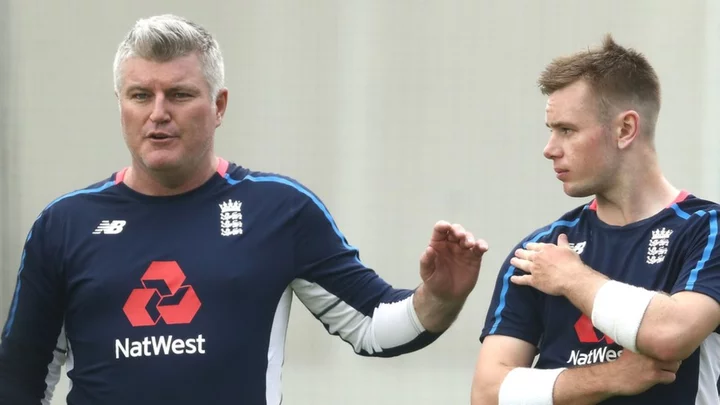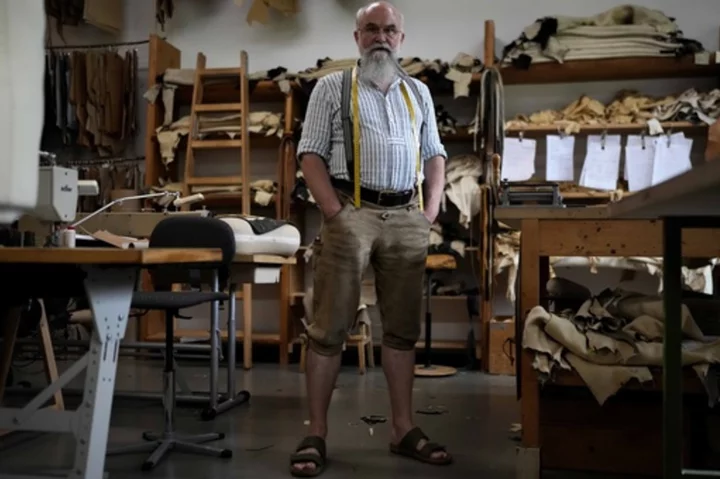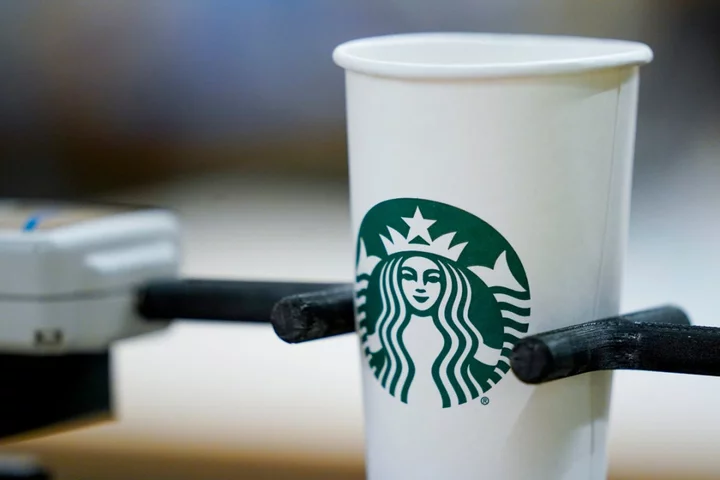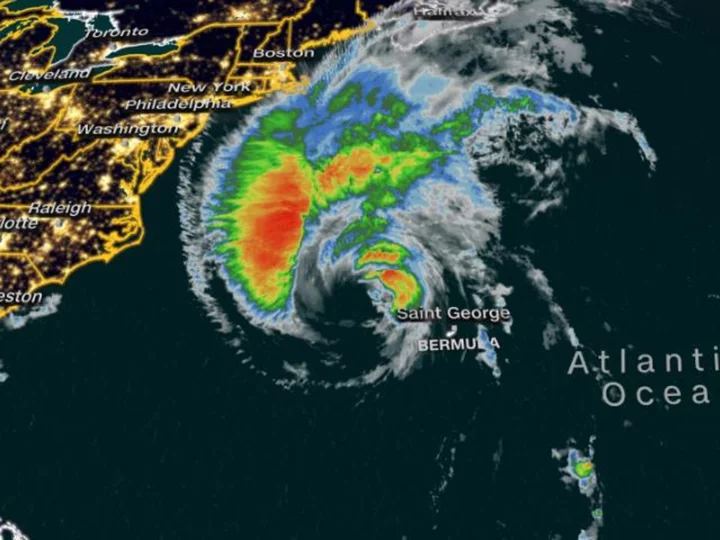
Imagination and hard work in children trumps obedience – research finds
Imagination trumps obedience when it comes to what the public thinks are important qualities in children, according to new research. But while British attitudes have changed in the past three decades, children being taught good manners at home is still highly rated among the majority of people, the wide-ranging survey found. Some 85% of people in 2022 saw good manners as especially important for children, down only slightly on the 89% who said so in 1990, research by the Policy Institute at King’s College London (KCL) showed. Good manners are still the quality we want to see most, there has been an increasing emphasis on the importance of hard work, and we’re also among the very most likely to value unselfishness Professor Bobby Duffy Obedience is now far less valued, the analysis of the long-running World Values Survey (WVS) found, with just 11% of those asked last year citing it as being an especially important quality for children to be taught, down from a peak of 50% who felt that way in 1998. More people now think qualities including independence and hard work are important things for a child to be taught, with the former up to 53% last year from 43% in 1990, and the latter having risen from 29% to 48%. Around four in 10 (41%) people said determination and perseverance were important, up from 31% three decades earlier, while more than a third (37%) felt imagination was important, up from less than a fifth (18%) in 1990. Tolerance and respect for others are still among the qualities seen as very important, coming just behind good manners at the top of the list, but it is now seen as less important that a child is taught to be unselfish, the research found. More than half (56%) of people thought it was especially important for a child to be taught not to be selfish back in 1990, but that fell to 43% last year. Of the 24 countries surveyed, the UK is among the most likely to value unselfishness in children and among the least likely to value responsibility and obedience, researchers said. More people in Japan, Norway, Sweden and South Korea felt imagination was very important for children to have, while only five countries (Egypt, Philippines, Morocco, Nigeria and Mexico) were above the UK in valuing good manners in children. Professor Bobby Duffy, director of the Policy Institute at KCL, said: “The qualities we’d like to see instilled in our children are important signals of what we value as a society – and the very clear message from these long-term trends is the increased importance of imagination and decline in how much we prize straightforward obedience. “But this doesn’t mean we want a society of self-centred children – good manners are still the quality we want to see most, there has been an increasing emphasis on the importance of hard work, and we’re also among the very most likely to value unselfishness. “Instead, this is likely to reflect a more general shift towards valuing self-expression, while still wanting our children to be positive and productive contributors to society.” The 2022 data comes from a sample of 3,056 adults across the UK interviewed by Ipsos through a mix on face-to-face and online survey methods, but for the analysis of trends over time, data is nationally representative for Great Britain only due to a lack of available trend data from Northern Ireland, and is based on surveys of 1,000 or more adults. Read More Charity boss speaks out over ‘traumatic’ encounter with royal aide Ukraine war’s heaviest fight rages in east - follow live 7 ways you could be damaging your eye health without even realising Celebrities mingle with royals at glam Vogue World party in London Sienna Miller bares baby bump at celebrity and royal-studded Vogue event
2023-09-15 15:45

7 ways you could be damaging your eye health without even realising
Our eyesight is often something we take for granted – until there’s something wrong with it. Problems like short-sightedness (myopia) are rapidly increasing. In fact, research has predicted that by 2050 there will be 4,758 million people with the condition – nearly half (49.8%) of the world’s population – as experts are highlighting ahead of National Eye Health Week (September 18-24) In addition, new research by Macushield found 73% of Brits notice their eyes deteriorating with age, and the World Health Organisation’s (WHO) World Report on Vision has predicted a dramatic increase in the need for eyecare in the near future, pointing out that at least 2.2 billion people globally have a vision impairment – and around half of these have vision impairment that could have been prevented. “Some people may not be giving their eye health the attention it deserves, occasionally missing out on annual eye tests, which play a crucial role in detecting conditions like cataracts, glaucoma, and age-related macular degeneration,” says ophthalmologist Dr Jørn Slot Jørgensen. “When identified and addressed in a timely manner, these issues can be managed effectively, helping safeguard our vision.” Jørgensen says the pandemic also played a role in worsening eye problems, particularly the increase in short-sightedness. “With the shift to remote work, people are now more likely to spend extended hours with their screens for work and leisure,” he says. “Prioritising eye health isn’t just a matter of convenience, it’s a fundamental aspect of our overall wellbeing.” Here Jørgensen, of the Laser Eye Clinic London, and Evelyn (Evie) Mensah, a consultant ophthalmologist and eye surgeon at Central Middlesex Hospital and member of The Royal College of Ophthalmologists council, outline seven ways people may be damaging their vision, without even realising… 1. Skipping eye tests Mensah says it’s advisable for people to have a sight test every two years, or more often if their optometrist recommends it. Jørgensen adds: “Failing to schedule regular eye tests can result in undiagnosed eye conditions. Conditions like glaucoma, diabetic retinopathy, and macular degeneration often develop without noticeable symptoms in their early stages, but early detection through eye tests is crucial for effective treatment and vision preservation.“ Routine eye tests can also pick up early signs of underlying systemic health conditions, such as diabetes, high cholesterol and high blood pressure. 2. Prolonged screen time The widespread use of digital devices such as laptops, tablets and smartphones has led to extended periods of screen time for both work and leisure, says Jørgensen. “This can result in digital eye strain, characterised by symptoms like dry eyes, headaches and blurred vision,” he explains. “In this age of digital technology, it’s advisable to relieve digital eye strain by using the 20-20-20 rule,” says Mensah – this means every 20 minutes, looking at something 20ft away for 20 seconds. “In addition, remember to blink when using a screen to prevent eyes from getting dry.” 3. Not wearing UV protective sunglasses Jørgensen says failing to wear sunglasses with adequate UV protection can lead to harmful UV radiation exposure, which may contribute to conditions like cataracts and age-related macular degeneration (AMD). “Protecting your eyes from UV rays, particularly in sunny conditions, is essential for preserving long-term eye health,” he stresses. Mensah says UV exposure can also increase the development of growths on the surface of the eyes called pterygia, and warns: “Not all sunglasses filter UV light, so ensure they carry the CE, UV 400 or British Standard Mark. And never look directly at the sun because this can cause a solar burn in the macula that can result in permanent visual loss.” 4. Poor diet and lack of nutrients Eating a healthy, balanced diet could help reduce your risk of sight-threatening eye disease such as AMD, which impacts central vision. Mensah explains that the macula – part of the retina which processes what you see directly in front of you – contains natural pigments such as lutein and zeaxanthin that are found in dark-green, leafy vegetables such as spinach and kale. “Vitamins A, C and E are also helpful, so eat at least five portions of fruit and vegetables a day,” she advises. “And if you have a family history of AMD, ask your GP about taking nutritional supplements.” Jørgensen adds: “A poor diet lacking essential nutrients like vitamins A, C, and E, as well as minerals like zinc, can harm eye health, as these nutrients are vital for vision and overall eye function. To maintain healthy eyes, it’s crucial to consume a balanced diet rich in leafy greens, colourful fruits and vegetables, and omega-3 sources.” 5. Smoking If you’re a smoker, stopping is not only beneficial to your general health but also your eyes, says Mensah: “Smoking cessation is a modifiable factor that can reduce the risk of developing certain eye conditions such as AMD and cataracts.” Ask your GP for support if you are keen to quit – there are lots of helpful resources available. 6. Not wearing prescribed glasses Mensah says there’s a widespread misconception that wearing prescribed glasses worsens your eyesight. “This notion is inaccurate,” she stresses. “The primary reason for wearing prescribed glasses is simply because you require them. If you neglect to wear them, you run the risk of experiencing headaches.” 7. Inadequate lighting “Working or reading in areas with insufficient lighting can make your eyes work harder, leading to eye strain, discomfort, and poorer vision,” says Jørgensen. He points out that good lighting, often called ‘task lighting’, is vital for creating comfortable conditions for reading and working. Read More Charity boss speaks out over ‘traumatic’ encounter with royal aide Ukraine war’s heaviest fight rages in east - follow live Celebrities mingle with royals at glam Vogue World party in London Sienna Miller bares baby bump at celebrity and royal-studded Vogue event See plus-size model Ashley Graham stun in Old Hollywood-inspired Harris Reed LFW show
2023-09-15 15:16

The West fears a closer Russia and North Korea. China may not
A rare meeting between Russia's Vladimir Putin and North Korea's Kim Jong Un at a space launch center in the Russian Far East earlier this week has triggered alarm from countries from South Korea and Japan to Ukraine, the United States and its partners in Europe.
2023-09-15 14:55

Truth behind ‘meteorite crater’ brings amateur astronomer down to Earth
A stargazer who thought he’d made the discovery of a lifetime was brought down to Earth with a bump when a crater apparently left by a meteorite was revealed to be nothing more than a hole dug by beach-goers. Astrophysics enthusiast Dave Kennedy was over the moon when the hole, several feet wide and deep, appeared in north Dublin. He felt sure that a small, black, heavy rock found at the bottom of the hole was an asteroid from outer space, and contacted various astronomy experts in an effort to confirm his theory. He said a scorch mark on one side of the rock showed the angle at which it had fallen. “Only a month ago, I was watching a documentary from Nasa on exactly what we’re looking at so when I looked at it and saw how uniform it is, and the vast crater, I knew immediately I was looking at an impact site,” he said. Visitors to the Portmarnock beach gathered to inspect the crater. One said: “We’re down here quite a lot and never seen anything like this before, so it’s pretty spectacular.” However, Mr Kennedy’s optimism was short-lived. Within a day of his appearance on Virgin Media News, a “context note” on X (formerly Twitter) compiled from user information read: “It is in fact not a cosmic event - instead it was dug out the day before by 2 lads with a beach spade.” Footage on social media posted by friends of the young men showed them sitting in the hole, digging it out with children’s spades, and was captioned: “The hole we dug on Saturday”. Although the astronomy enthusiast was widely mocked, he said he would still have the rock analysed in the hope it wasn’t a “completely fruitless discovery”, Virgin Media News reported. Research on the chances of asteroids hitting Earth has focused on much larger rocks. Astronomers say Earth probably will not be struck by an object 1km wide (0.6 miles) for at least 1,000 years – but they have not ruled out smaller meteorites landing before then. Read More 4.6 billion-year-old meteorite sheds light on early solar system – study Best beach stays in the UK and Ireland for a peaceful break in 2023 Ukraine war: Kyiv ‘is pushing Russia back’, UK’s most senior military officer says War-blinded Ukrainian soldier cries with joy at new love at his wedding Ukraine ‘holds initiative’ in counteroffensive against Russia, says UK military chief
2023-09-15 14:50

Taiwan tells Elon Musk it is 'not for sale'
Mr Musk draws anger from Taipei again for his comments saying the island belongs to China.
2023-09-15 14:23

Stuart MacGill: Australian cricket star charged over drug supply plot
Two years after his alleged kidnapping made global headlines, Stuart MacGill has been arrested.
2023-09-15 14:23

Danilo Cavalcante didn't eat for days and considered surrendering during manhunt, official says after his capture
Danilo Cavalcante explained how he was able to evade capture after his escape from a Pennsylvania jail, including moments when officers passed within yards of him.
2023-09-15 14:22

A German tailor who specializes in bespoke lederhosen is in high demand ahead of Oktoberfest
Germany’s city of Munich is getting ready to tap the kegs for Oktoberfest
2023-09-15 14:20

Ukraine ‘holds initiative’ in counteroffensive against Russia, says UK military chief
Britain’s military chief has defended Ukraine’s counteroffensive and said its troops “continue to hold the initiative” amid criticism that the pushback against the Russian invasion is moving slowly. The comments have also come as the war-hit nation’s deputy defence minister on Thursday said “good news” had emerged in the eastern front of the battlefield. “In the north, they are holding and fixing Russian forces there and in the south they are making progress between 10km and 20km, depending on how you judge it,” Sir Tony Radakin was quoted as saying by The Guardian at the DSEI arms fair in London. “The idea that war is neat and tidy, and you can plan and predict it to the nth degree is nonsense,” said Britain’s most senior military officer. He said progress of the counteroffensive could not be measured by a predictable timetable and warned the UK is vulnerable to a potential missile or drone attack as he pushed for a further discussion on improving homeland security. There is an “aggressive world out there in terms of state threats”, he said, pointing out it is now easy to “get close to a country and fly drones in”. British armed forces were “having a bigger conversation about homeland defences”, the chief of the defence staff said and asked whether within that “we need to have a conversation about integrated missile defence”. Admiral Radakin has been closely monitoring the war with communication lines to Ukraine’s most senior military commander Valerii Zaluzhnyi. The comments come a week after Nato secretary-general Jens Stoltenberg shot back at recent criticism of “slow” counteroffensive from Ukrainian troops as he pointed out the numbers of mines in the battlefield Ukraine is encountering are at a historic high. “The starting point is that the Russian army used to be the second strongest in the world. And now the Russian army is the second strongest in Ukraine. That’s quite impressive by Ukrainians,” he said. “No one ever said that this was going to be easy,” Mr Stoltenberg told lawmakers at the European parliament earlier this month. “Hardly any time in history we have seen more mines on the battlefield than we are seeing in Ukraine today. So it was obvious that this was going to be extremely difficult. “The Ukrainians are gradually gaining ground. They have been able to breach the defensive lines of the Russian forces, and they are moving forward,” he said. Ukrainian officials said the war being fought in the country is unlike any other, as its air space has not been shut down and it does not have top-tier warplanes like F-16s. Last month, several US and other Western officials suggested the grinding war’s counteroffensive stage was falling short of expectations – but did not choose to be quoted on their claims. Some officials pointed holes in Ukraine’s strategy and blamed it for concentrating its forces in the wrong places. The counteroffensive has been backed by billions of dollars’ worth of Western military equipment. Read More Just 14 UK tanks for Ukraine? We must do better than that Sunak says Russian leader ‘doesn’t want to be held accountable’ at G20 US sends Ukraine controversial depleted uranium weapons that can pierce tank armour Zelensky needed to sack his defence minister – but it goes beyond just corruption scandals From Challenger to Leopard: How Ukraine’s tanks compare to Russia’s
2023-09-15 13:59

Citing sustainability, Starbucks wants to overhaul its iconic cup. Will customers go along?
Bethany Patton steps up to the counter and places her pink mug into a shoebox-sized dishwasher. It spins. It whirs. Water splashes inside. After 90 seconds, the door opens and steam emerges. A barista grabs the mug, dries it and prepares Patton’s order — a 16-ounce Starbucks double espresso on ice. For bringing her own cup, Patton gets $1 off her drink. “Saving the environment is important and all, but I probably come here more in knowing that I’m going to get a dollar off,” says Patton, 27, a cancer researcher at Arizona State University. Two friends who came on the afternoon coffee run nod as they hold the cups that they, too, brought along. Just as noteworthy as what they're carrying is what they are not: the disposable Starbucks cup, an icon in a world where the word is overused. For a generation and more, it has been a cornerstone of consumer society, first in the United States and then globally — the throwaway cup with the emerald logo depicting a longhaired siren with locks like ocean waves. Ubiquitous to the point of being an accessory, it has carried a message: I am drinking the world's most recognizable coffee brand. Now, in an era where concern for sustainability can be good business, the Starbucks disposable cup may be on its way to extinction thanks to an unlikely force: Starbucks itself. CONVENIENCE COLLIDES WITH VIRTUE By 2030, Starbucks wants to move away completely from disposable cups, which represent big portions of the company’s overall waste and greenhouse gas emissions. The stated reason is that it's the right thing to do for the environment, and Starbucks has a history of lofty sustainability goals around various aspects of their global operations. Some have been met, such as new stores being certified for energy efficiency; others have been revised or scrapped entirely. For example, in 2008 the company said that by 2015 it wanted 100% of its cups to be recyclable or reusable. Today, that's still a long way away. Today's drive to overhaul the cup comes with an obvious business imperative. Producing disposable products like cups creates greenhouse gas emissions, which warm the planet and lead to extreme weather events and other manifestations of climate change. That goes against customers' increasing expectations for companies to be part of the solution to climate change. Still, while customers want companies to be environmentally conscious, that doesn’t mean they’re willing to give up convenience. And there's this: Could eliminating the millions of paper and plastic cups used each year hurt Starbucks? After all, those cups, in the hands of customers, are advertising — a market penetration that makes Starbucks feel ubiquitous. At the store where Patton gets her coffee, Starbucks already doesn't serve any in disposable paper or plastic cups. Customers who don’t bring their own are given a reusable plastic one that can be dropped off in bins around campus. It’s one of two dozen pilots over the last two years, aimed at changing how the world’s largest coffee maker serves its java. The goal: to cut the company's waste, water use and carbon emissions in half by 2030. Pulling that off will be tricky and fraught with risks. It provides a window into how companies go from ambitious sustainability targets to actual results. “Our vision for the cup of the future — and our Holy Grail, if you will — is that the cup still has the iconic symbol on it,” says Michael Kobori, head of sustainability at Starbucks. “It’s just as a reusable cup.” Starbucks sees the change as an opportunity to cast the siren, and the company, in a different light. It also wants to push more suppliers in its production chain to provide recycled material and partners, such as universities and other locales that house stores, to be able to handle all that comes with reusable cups. Erin Simon, vice president for plastic waste and business at World Wildlife Fund, says commitment from major companies can help. But ultimately, she says, major change can happen only with corporate collaboration — and government regulation. “Not one institution, not one organization, not even one sector can change it on its own," Simon says. At Starbucks, the changes will create ripple effects. Jon Solorzano, a Los Angeles lawyer who advises companies on developing climate-friendly operations and disclosures, (an area referred to as “environmental, social and governance”), says the company likely has hundreds of suppliers that help manufacture cups. “It’s kind of like turning an aircraft carrier around,” Solorzano says. “Little tiny tweaks, which seem insignificant, can actually have big operational challenges for an organization." Starbucks is not the first company to push toward a reusable cup. From large companies in Europe, such as RECUP in Germany, which uses reusable cups and other food packaging, to local coffee houses in cities like San Francisco, the goal for years has been to shed disposable paper and plastic. But as the largest coffee company in the world, with more than 37,000 stores in 86 countries and revenues of $32 billion last year, Starbucks could force change across the industry. At the same time, failure to adapt and lead could hurt the coffee giant in customers' eyes. “I’ll always choose the more sustainable company,” says Irene Linayao-Putman, a public health worker from San Diego who recently bought Starbucks while visiting Seattle. The road to overhauling the container transcends just making a different choice or spending money. Improving sustainability requires navigating a web of technological developments, seeking out like-minded suppliers and testing how far customers can be pushed to change. For Starbucks, it means doing two major things in parallel that seemingly conflict: Move toward only reusable cups while developing disposable cups that use less material and are more recyclable. And managing the optics along the way. “They are just trying to get more buyers,” 10-year-old Aria June said with a laugh after buying Starbucks in Seattle. Then, prodded by her father, she added that sustainability and getting more business could co-exist. THE MECHANICS OF REUSE At the Arizona State store, if customers don’t bring their own cup, they are given a reusable plastic one with a Starbucks logo. If they bring it back, they get $1 off, just like customers who bring their own. And if they don't want to hold onto it? There are bins around campus, and the cups are washed by the university — part of a partnership with Starbucks — and returned to the store. Cups too damaged to be reused, along with disposable Starbucks cold drink cups and other plastic found in the trash, are sent to the university’s Circular Living Lab. They're shredded, melted and extruded into long, lumber-like pieces. Those pieces are cut, sanded and built into boxes, which become the return bins for the reusable cups. “This obviously has some energy and production costs, but using recycled content is always going to be less energy intensive (and) emit less CO2 than using virgin plastics,” says Tyler Eglen, the lab's project manager. For several years, Starbucks has been increasing the amount of recycled material in disposable paper cups. In some markets last year, Starbucks began using single-use paper cups made with 30% recycled material, an increase from 10%. The plan is to have all cups at 30% recycled material in in all U.S. stores starting in early 2025. That pushes the limits of what can be done with recycled paper material that holds hot liquids. Paper pulp from recycled cups has shorter fibers than virgin pulp, which means less rigidity, important particularly with hot coffee. How much recycled material can be used in manufacturing new cups depends on how equipped any particular area is to gather material and recycle it. Big cities have major recycling infrastructure, but many communities around the world have little to no recycling capacity. Another barrier: the lining inside the cup, crucial to keeping a hot liquid from quickly breaking down the paper. Made of polyethylene, a heat-resistant plastic, the liner is about 5% of the total cup but a significant piece of its overall carbon footprint. There is also the plastic lid. “Today, the reality is that for protection, as we put a hot beverage inside, we need a good seal on those cups," says Jane Tsilas, Starbucks’ senior manager for packaging. A similar testing and refining process is happening with disposable cold-drink cups. At the Tryer Center innovation lab in Starbucks' Seattle headquarters, drinks with ice in plastic cups are placed in holders attached to a platform. It then shakes as technicians look for leaks and flaws. For the last several years, Starbucks has been testing different kinds of plastics. In 2019, the company went to a strawless lid, eliminating a good amount of plastic. By the end of 2023, the goal is to reduce by 15% the amount of material in each cup. To do that, technicians examine different parts of the cup to see where less material may be used without weakening it. For example, could reducing the thickness where many people hold the cup, about halfway between the middle and lid, mean the cup collapses and the drink spills on the customer? "If it passes tests with baristas, then we would put it in the stores,” says Kyle Walker, a packaging engineer on Starbucks' research and development team. NOT AS EASY AS IT MIGHT SEEM Eventually, the endpoint is this outcome, which is more sustainable and good PR, too: No more disposables at Starbucks. That's because no matter the tests or technological innovations, there are limits to how much waste can be reduced with disposable paper and plastic cups. Long-term reductions in waste will come from reusable cups. The company has a long way to go. Since the reintroduction of reusable cups in some stores in July 2021 — reusable cups were not used during much of the COVID-19 pandemic — only 1.2% of worldwide sales in fiscal year 2022 came from reusables. Starbucks refused to provide data on how many disposable cups it uses in any given year. For all the talk of sustainability and increasing consciousness about climate change, it’s fair to assume that a significant number of Starbucks’ disposables end up in landfills. Even in Seattle, a progressive city with good recycling infrastructure, there are many cups in garbage cans outside Starbucks stores. Valencia Villanueva, a barista at the Arizona State store, has noted a growing consciousness among customers about the cup-washing machine and the “borrowed” cup program. That gives her confidence that the future is reusable cups. After all, it's not as if anyone is clamoring to be wasteful — even if what they're giving up is an item that became something of a global status symbol. “Nobody," she says, “has complained and said they wanted a single-use cup.” ___ Peter Prengaman is news director of The Associated Press' climate and environment team and can be followed here. Video journalist Manuel Valdes in Seattle contributed to this report. ___ AP climate and environmental coverage receives support from several private foundations. See more about AP’s climate initiative here. The AP is solely responsible for all content. Read More Ukraine war’s heaviest fight rages in east - follow live Charity boss speaks out over ‘traumatic’ encounter with royal aide Citing sustainability, Starbucks wants to overhaul its iconic cup. Will customers go along? From piñata to postage stamp, US celebrates centuries-old Hispanic tradition Starbucks cheers ‘good progress’ in plan for 100 new UK shops
2023-09-15 13:59

Ukraine troops capture village south of Bakhmut, military says
(Corrects location to "south" in headline) (Reuters) -Ukraine's military said on Friday that its troops have captured a village near
2023-09-15 13:46

Parts of coastal New England and Atlantic Canada are under tropical storm warnings as Hurricane Lee nears
Hurricane Lee is expected to lash parts of coastal New England and Atlantic Canada on Friday with heavy rain and strong winds that could lead to flooding in some areas and knock out power across communities.
2023-09-15 13:26
